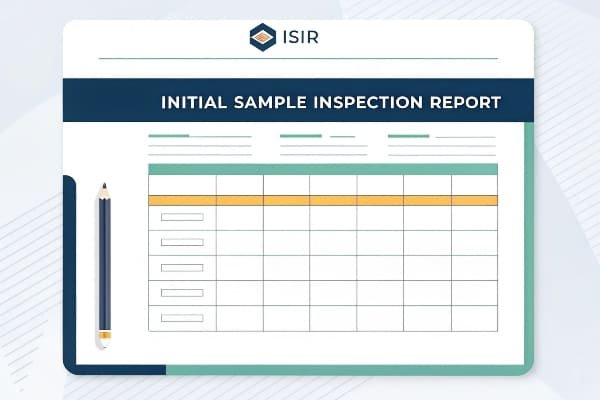When it comes to manufacturing, particularly in industries like automotive and rubber, ensuring quality control is a top priority. Two essential processes that play a significant role in this are ISIR and PPAP. While both aim to validate product quality, their scope, purpose, and application differ.
ISIR and PPAP1 are both crucial in quality control2 but serve different purposes. ISIR is typically used for initial part validation, while PPAP ensures ongoing part consistency during production.
Let’s dive into what ISIR and PPAP are, how they differ, and what each process involves.
What is the ISIR Quality Process?
The Initial Sample Inspection Report (ISIR)3 is a process used to verify that a new part meets all necessary specifications before mass production begins. It is commonly used when introducing a new part or design into manufacturing, ensuring that it meets quality standards and can be consistently reproduced.
ISIR focuses on validating the first samples of a new part to ensure they meet design specifications before starting large-scale production.
The Purpose of ISIR
ISIR ensures that the first samples of a product meet all required specifications, from design to material properties. The process focuses on early validation to detect potential issues that may affect production later on. It is typically required for the first batch or when changes to a product’s design or manufacturing process are made.
Key Components of ISIR
- Initial Samples: These are the first produced parts after the design is finalized.
- Measurement and Testing: Parts undergo testing and inspection to verify their compliance with the specifications.
- Documentation: Results are documented and presented to the customer for approval.
- Approval: Once the samples are confirmed to meet the requirements, the production process can begin in full.
Difference Between ISIR and PPAP
Though both ISIR and PPAP focus on part quality, the scope of each process is different. While ISIR is used primarily for initial validation, PPAP is a more comprehensive process that spans the entire production cycle.
ISIR is used for validating initial samples, whereas PPAP is a more detailed process ensuring consistent quality throughout the production cycle.
ISIR vs. PPAP: Key Differences
| Aspect | ISIR | PPAP |
|---|---|---|
| Purpose | Validates initial part samples | Validates full production readiness |
| Scope | Focused on first production samples | Covers ongoing production quality |
| Documentation | Basic documentation for sample approval | Comprehensive documentation, including control plans and material certifications |
| When Required | When a new part or design is introduced | For ongoing production and design changes |
| Approval Process | Requires approval of the first samples | Requires approval for full production |
| Production Focus | Focuses on the quality of early samples | Ensures consistency during full production |
Why ISIR is Important
ISIR ensures that the first batch of parts meets specifications before moving forward with mass production. It serves as an initial checkpoint to catch any design or manufacturing issues early. If the ISIR fails, the manufacturer can adjust the process or design before proceeding further, saving time and resources in the long run.
When to Use ISIR
ISIR is required for new part introductions, when changes to an existing part are made, or when a new supplier is used. It ensures that the initial batch meets the customer’s expectations and quality requirements.
Conclusion
ISIR and PPAP are both vital processes for ensuring product quality, but they serve different purposes. ISIR is focused on the initial validation of new parts or design changes, while PPAP ensures that parts continue to meet quality standards throughout full-scale production. Understanding the difference between these two processes can help manufacturers maintain consistent product quality and reduce the risk of defects.
Footnotes:
-
Discover the importance of PPAP in maintaining quality throughout production and how it differs from ISIR. ↩
-
Learn about effective quality control practices that can enhance product quality and consistency in manufacturing processes. ↩
-
Explore this resource to understand the ISIR process and its significance in ensuring product quality before mass production. ↩









